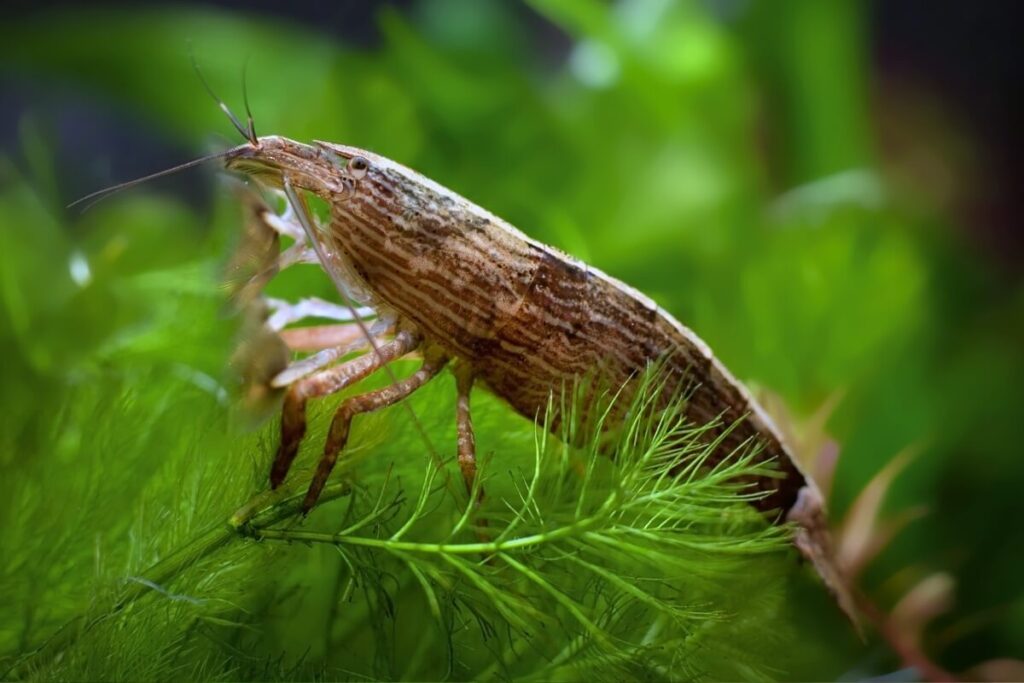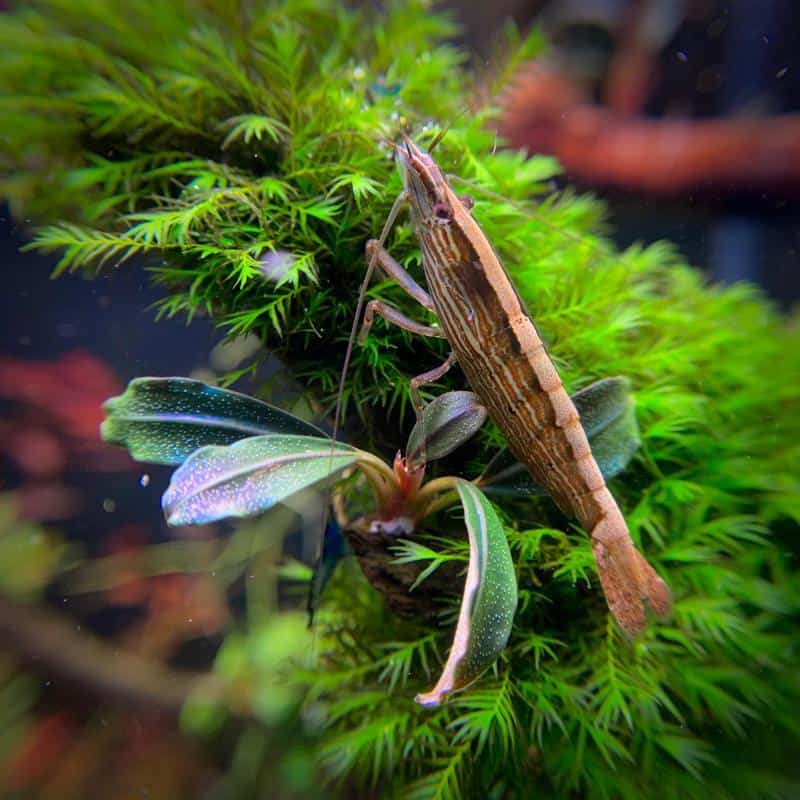The bamboo shrimp, also known as the wood shrimp, is a fascinating freshwater shrimp species that is native to Southeast Asia. They are a popular choice for aquarium enthusiasts due to their unique appearance, peaceful temperament, and relatively easy care requirements.
Physical Characteristics
Bamboo shrimp are named for their long, slender bodies that resemble bamboo stalks. They have a translucent, brownish-yellow exoskeleton with long, delicate antennae and two pairs of long, feather-like appendages called maxillipeds that they use to filter feed. These appendages are covered in tiny hairs that trap microscopic particles of food as the shrimp wave them through the water.
Bamboo shrimp can grow up to 4 inches long, but most specimens kept in aquariums reach around 2 to 3 inches in length. They are generally peaceful and can be kept in groups without issue. However, they can be territorial and may compete with each other for food or space in the aquarium.
Habitat and Behavior
Bamboo shrimp are native to fast-flowing rivers and streams with rocky bottoms in Southeast Asia, including Thailand, Indonesia, and Malaysia. They are typically found in areas with strong currents, where they can use their specialized feeding apparatus to capture drifting food particles.
In the aquarium, bamboo shrimp should be provided with a strong current to simulate their natural habitat. They are most comfortable in a tank with a flow rate of at least 10 times their body length per hour. A high-quality filter and aeration system are also essential to keep the water clean and oxygenated.
Bamboo shrimp are peaceful and generally get along well with other fish and invertebrates. However, they may be vulnerable to predation by larger, more aggressive fish, so it’s best to keep them with smaller, peaceful species. They are also sensitive to water quality, so it’s essential to maintain stable water parameters and perform regular water changes to keep the tank clean.
Feeding
As filter feeders, bamboo shrimp require a constant supply of small particles of food to survive. In their natural habitat, they feed on algae, plankton, and other microscopic organisms that drift by in the water current. In the aquarium, they can be fed a variety of commercially available shrimp and fish foods, as well as live or frozen foods such as brine shrimp or bloodworms.
It’s essential to ensure that the food particles are small enough for the shrimp to capture with their maxillipeds. Finely ground flake or pellet foods, as well as liquid food suspensions, are ideal for bamboo shrimp.
Breeding
Bamboo shrimp are not commonly bred in the aquarium, and there is limited information available on their breeding habits in the wild. However, they are thought to be similar to other freshwater shrimp species, with males and females mating and releasing their eggs into the water column. The larvae then hatch and develop into miniature versions of the adult shrimp.
Final Thoughts
The bamboo shrimp is a unique and fascinating species that is well-suited to aquarium life. They are peaceful, easy to care for, and can provide a striking visual element to a planted aquarium. However, they do require a specific set of water conditions and specialized feeding requirements, so it’s important to do your research before adding them to your tank. With the right care, bamboo shrimp can thrive in captivity and provide years of enjoyment to their keepers.










![]()
